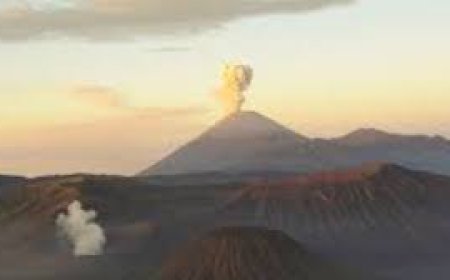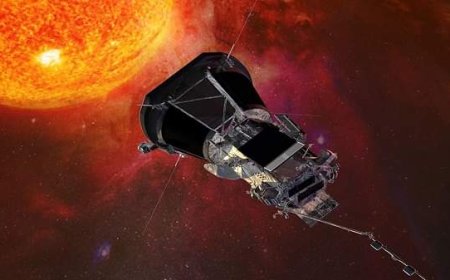Asteroid 2024 XN1: A Christmas Eve Visitor Passing Safely by Earth
On December 24, 2024, as the world celebrates Christmas Eve, a unique cosmic event will occur. A 120-foot-wide asteroid, named 2024 XN1, is set to pass Earth at a safe distance. Though it will not pose any danger, its flyby is a reminder of the universe’s dynamic nature and humanity's responsibility to stay vigilant about near-Earth objects (NEOs). In this article, we delve into the details of 2024 XN1’s approach, its significance for scientists and the general public, and the broader implications of monitoring asteroids.

What is Asteroid 2024 XN1?
Asteroid 2024 XN1 is a near-Earth object (NEO) belonging to a class of celestial bodies that occasionally come close to our planet’s orbit. Measuring approximately 120 feet (37 meters) in diameter, it is roughly the size of a commercial airplane. Its projected speed of around 14,743 miles per hour (23,724 kilometers per hour) is typical of asteroids that orbit within our solar system.
The asteroid was discovered and tracked by astronomers using advanced observation techniques and space telescopes. Such efforts are part of a global initiative to map and monitor all significant NEOs that could potentially affect Earth.
The Flyby: How Close Will It Get?
Despite some sensational headlines, asteroid 2024 XN1 will pass Earth at a comfortable distance of approximately 4.48 million miles (7.2 million kilometers). This is about 16 times the distance between Earth and the Moon, making it entirely safe for our planet.
While this distance may seem vast, it is considered relatively close in astronomical terms. NASA and other space agencies maintain a list of such "close approaches" to better understand the behavior of asteroids within our solar system.
Why is This Event Important?
The approach of 2024 XN1 is significant for several reasons:
1. Scientific Observation:-
The flyby offers scientists an opportunity to study the asteroid’s composition, orbit, and physical properties. By analyzing its trajectory, researchers can refine their models of asteroid movement and better predict future encounters.
2. Public Awareness:-
Events like this serve to educate the public about the importance of tracking NEOs. They remind us of the potential threats that space objects could pose and the need for continuous monitoring and preparation.
3. Technological Testing :-
The flyby allows space agencies to test and calibrate their detection and tracking systems. Advanced radar and telescopic imaging will be used to gather data, ensuring the accuracy of future asteroid tracking missions.
The Role of NASA and Global Monitoring Systems :-
NASA's "Asteroid Watch" program is part of its Planetary Defense Coordination Office (PDCO), which monitors near-Earth objects. This program uses advanced telescopes, radar systems, and computational models to track the movements of asteroids and comets.
Similarly, international collaborations, including the European Space Agency (ESA) and other space organizations, work together to share data and enhance global readiness. Their combined efforts ensure that any potential threats are identified well in advance.
What Would Happen if an Asteroid Like 2024 XN1 Hit Earth?
Asteroids the size of 2024 XN1, while relatively small compared to other celestial bodies, can still cause significant local damage if they were to impact Earth. The energy released from such an impact could be comparable to that of a small nuclear explosion.
However, it is crucial to note that the likelihood of an asteroid of this size hitting Earth is extremely low. Scientists continuously track these objects to predict and mitigate any potential risks.
Lessons from Past Events :-
The approach of 2024 XN1 brings to mind several past events involving asteroids:
1. Chelyabinsk Meteor (2013) :-
In February 2013, a 65-foot-wide meteor exploded over Chelyabinsk, Russia, releasing energy equivalent to 30 atomic bombs. Although it did not result in any fatalities, the event caused widespread damage and injuries due to the shockwave.
2. Tunguska Event (1908) :-
In 1908, an asteroid or comet exploded over Siberia, flattening 800 square miles of forest. The Tunguska event remains the most significant asteroid-related impact in recorded history.
These incidents highlight the importance of early detection and monitoring to prevent potential disasters.
The Broader Implications of Asteroid Tracking -
Tracking asteroids like 2024 XN1 is not just about preventing catastrophic impacts. It also has broader implications for science and technology:
1. Understanding the Solar System :-
Studying asteroids provides insights into the early solar system’s formation. These celestial bodies are remnants of the building blocks that formed planets and moons.
2. Resource Utilization :-
Asteroids are rich in valuable resources, including metals and water. Future missions may explore the feasibility of mining these objects to support space exploration and industry.
3. Space Exploration :-
Missions to asteroids, such as NASA’s OSIRIS-REx, have demonstrated the potential for collecting and analyzing samples. These missions contribute to our understanding of the universe and pave the way for human exploration beyond Earth.
Public Perception and Misconceptions :-
Whenever news of an asteroid approach emerges, it often sparks a mix of curiosity and concern among the public. Misleading headlines or exaggerated claims can lead to unnecessary fear.
It is essential to rely on credible sources, such as NASA or recognized scientific organizations, for accurate information. Events like the flyby of 2024 XN1 provide an opportunity to educate the public about the realities of asteroid science and the measures in place to ensure planetary safety.
Looking Ahead: Future Asteroid Monitoring :-
The successful tracking of 2024 XN1 is part of a broader effort to enhance planetary defense systems. Upcoming missions and projects include:
1. DART Mission:-
NASA’s Double Asteroid Redirection Test (DART) successfully demonstrated the ability to alter an asteroid’s trajectory. This technique could be used to deflect potential threats in the future.
2. NEO Surveyor Mission:-
Scheduled for launch in the coming years, NASA’s NEO Surveyor spacecraft will enhance our ability to detect and track smaller asteroids.
3. International Collaborations :-
Continued collaboration between space agencies worldwide will ensure comprehensive coverage and rapid response to potential threats.
Asteroid 2024 XN1’s Christmas Eve flyby is a fascinating event that underscores the importance of ongoing vigilance in monitoring near-Earth objects. While it poses no threat to our planet, its approach highlights the dynamic nature of our solar system and humanity's responsibility to understand and prepare for potential cosmic challenges.
Through global cooperation, advanced technology, and public awareness, we can ensure that Earth remains safe from the potential hazards of space. Events like this remind us of our place in the universe and the remarkable strides we have made in understanding and navigating the cosmos.
Source :- Space.com, daliymail, times of india, ndtv


















































